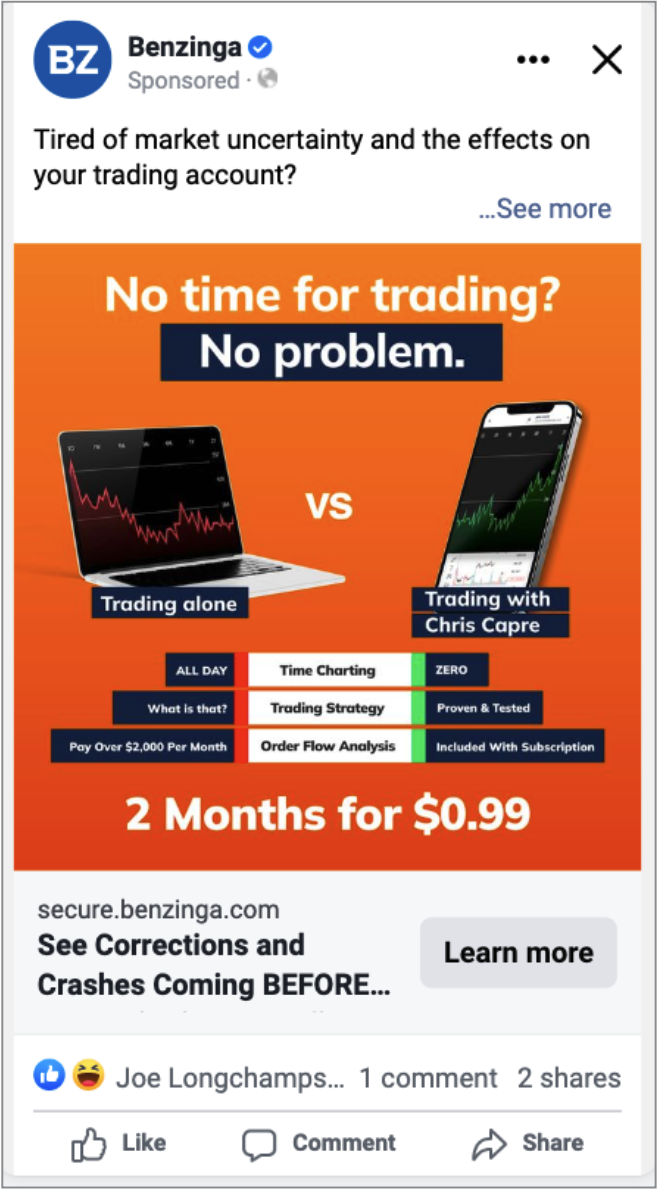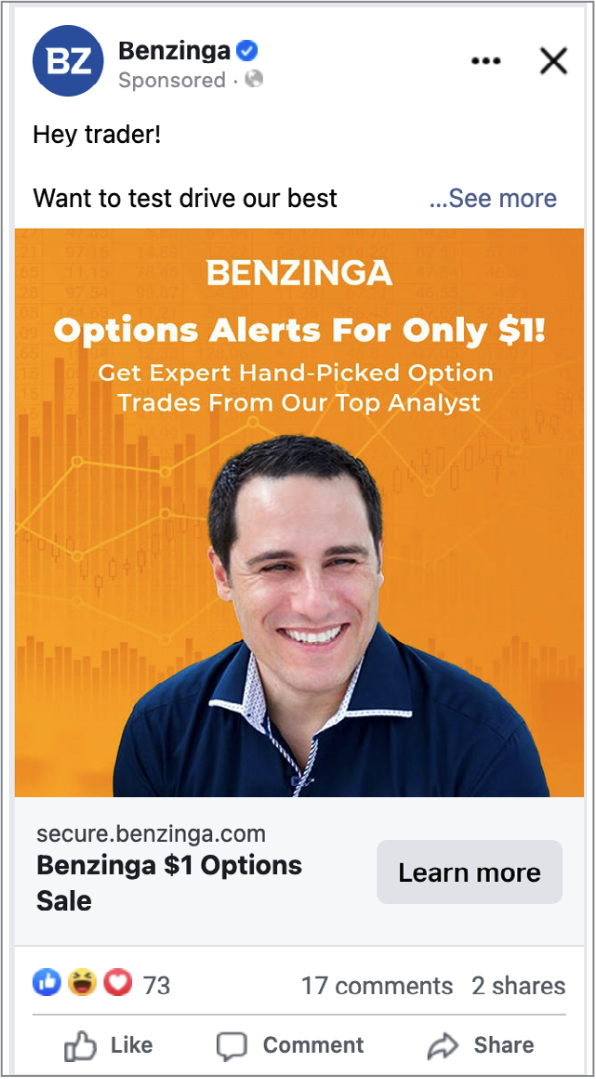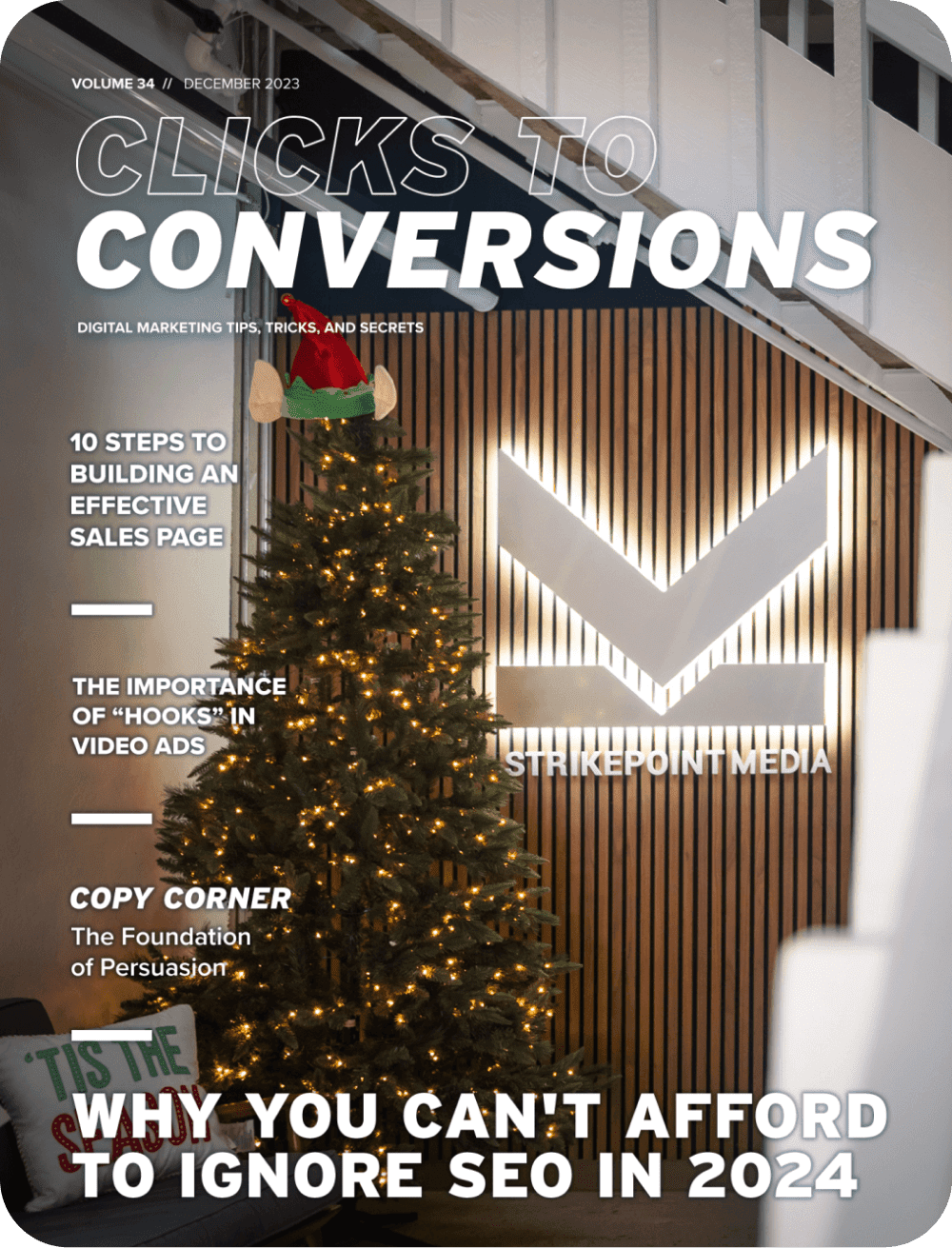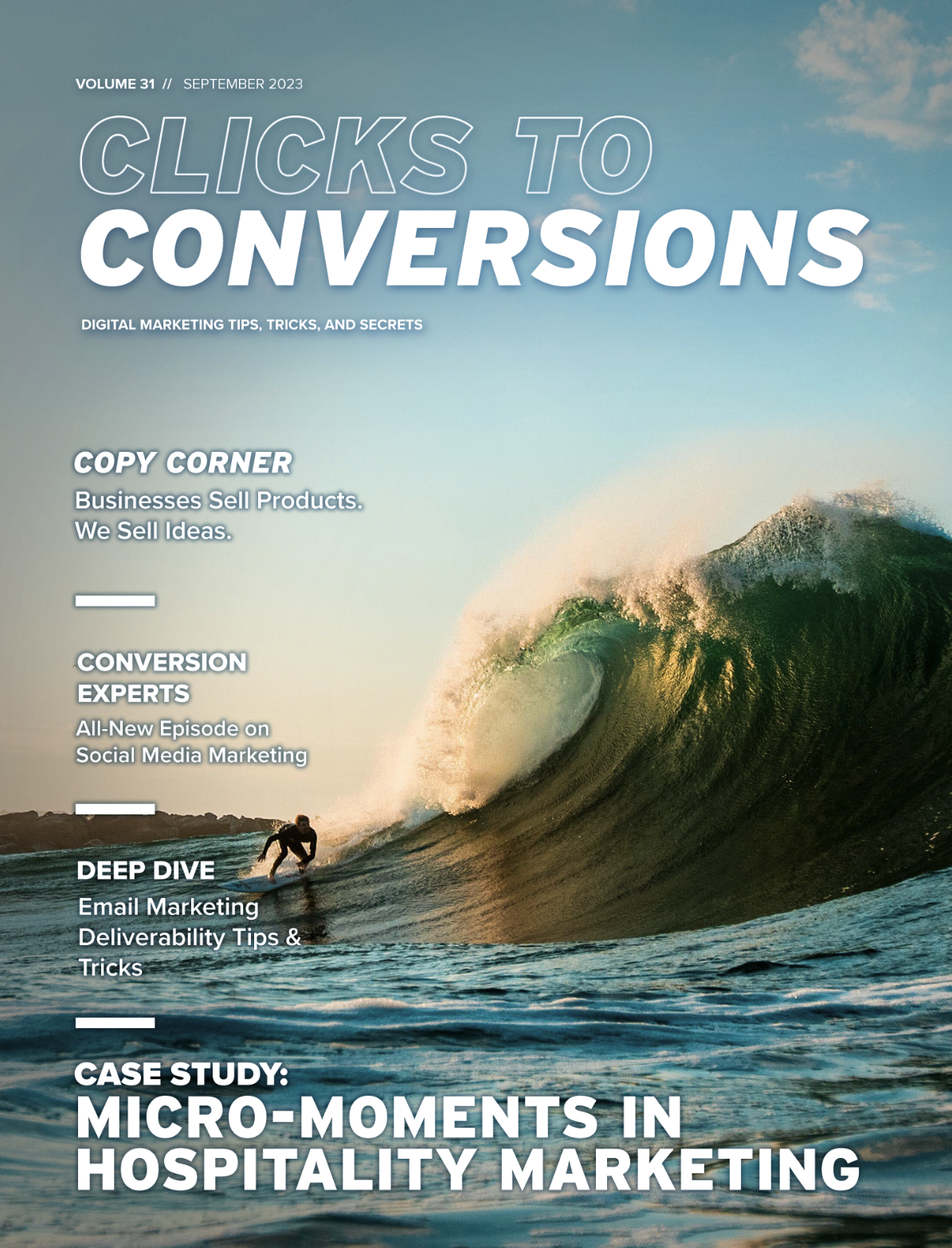What’s Hot
Beating the Algorithm
Every platform has one simple goal: get the right content to the right viewer so they remain on the platform longer.
Platforms spend hundreds of millions of dollars creating algorithms that are designed to feed the right content to the right people. And every marketer, business owner, and influencer spends hundreds of hours trying to beat that algorithm.
Unfortunately, the algorithm is smarter than you and me and all of us!
Plus, it’s constantly being updated and improved because of the armies of digital marketers working to game the system.
The truth is that there’s only one way to beat the algorithm, and when you do it right, not only are you beating the machine, but you’re getting in front of your target audience and skipping the unqualified, un-targeted views you don’t want.
Un-targeted views are worth absolutely nothing to you or your business. I mean, sure it can feel nice being “instafamous” or uploading a video that gets millions of views. But from a business standpoint, who cares if a video you upload is seen by millions of people if not a single one is interested in what you’re trying to promote?
If you want to beat the machine, you need to understand that every platform’s algorithm cares about one thing only …
Watch time! That’s it. The viral success of your content is simply dependent on how much time people spend watching your content.
That’s why we spend so much time producing new content that people consume, like our Conversion Experts or Strikepoint Academy videos on YouTube.
Now, to be clear, likes, shares, and comments definitely matter. But the one metric to rule them all is watch time, which is where you should focus your energy. Whether you’re on Instagram, TikTok, or YouTube, their inherent goal is the same – keep users online. And they measure that through watch time.
More specifically, the average percentage of watch time to the overall duration of a video (AKA average watch time).
Every platform provides analytics that you can use to see your average watch time for a particular video. The higher that number the better. But just to give you an idea let’s assume you upload a thirty second video:
An average watch time of 50% means that on average your audience watched 15 seconds of the video. An average watch time of 100% means that on average your audience watched the entire 30 second video.
But did you know that your AWT can go above 100% if they rewatch!? An AWT of 150% means that on average your audience watched the entire 30 second video then allowed it to loop watching an additional 15 seconds. Each platform will provide analytics that display average watch time in time, percentage, or both.
If your average watch time is good, the algorithm will serve your video to more people, both followers and new, until AWT drops.
For example, let’s say the algorithm serves the video to 100 people, half of these people already follow you, half are new. The video gets an average watch time of 50%, so of those 100 people they each watched your 30 second video for an average of 15 seconds. But when the next 100 people watched the video, the average watch time dropped to 40%. Still not bad, so it serves it to another 200 people. But this time average watch time fell in half to 20%. Eventually, when the average watch time continues to drop, at a certain point the algorithm will stop serving the video to more people. But if that AWT stays up, the platform will continue sharing your content.
Now the million dollar question …
How do you get people watching more of your content so that the algorithm keeps serving it up on your behalf?!?
That’s where our 30-Day Viral Marketer Training can help!
It’s our debut marketing education course built in conjunction with the legendary Pye Jirsa, and it was designed with one goal: help you master the art of short-form content to 10x your reach.
This course teaches you to organically market your products or services through short-form content that’s engaging and valuable, helping you build a massive online following and sell more products than ever before.
Don’t waste time trying to game the system or listen to “hacks” and tricks to get more views. It doesn’t matter.
Algorithms are out of your control, but creating good short-form content is something that is completely within your control. Good short- form content works on every platform. And the 30- Day Viral Marketer framework will help you create consistently viral content, regardless of where you decide to use it.
Trust me, if you don’t love it, I’ll give you the money back out of my own pocket, no questions asked.
For more information on 30-Day Viral Marketer, click here.
Behind the Scenes: Creating UGC Ads
User Generated Content (UGC) ads are a pretty common element of the C2C Report because they’re so effective. And since the C2C is all about providing value, this month we’re taking you behind the scenes and showing how we create these home run ads for ourselves and our clients – including how we script, film, and produce these ads.
Let’s look at a specific example from Benzinga. This ad creative was produced for a campaign called OptionSurge:
Scripting
We use a special technique called Modular Scripting when writing our UGC Video ad scripts. This format lets our talent record short takes for each line in the script, then we mix and match different recorded lines to create completely new variations of certain ads that we can then test.
For example, you can record 3 different hooks, 3 different body scripts, and 3 different closing scripts. And while that may only be 3 different takes for each piece, you can mix and match those bits to make 27 unique variations to test.
For our example, the hook is “I just started Benzinga’s OptionSurge alert service and it was 95% off! Here’s why I LOVE it”
In just 5 seconds the viewer knows exactly what they’re going to hear about, and can decide to stick around and qualify themselves or save us the cost of the view by skipping our ad. 2 other hook variations we recorded were, “Let me show you how it works,” and “Let me show you how easy it is to use.” Each hook can appeal to a different segment of your audience.
Once our script is written and approved by the client, it’s handed off to the production team to bring to life!
Filming
Most of our UGC video ads are filmed at our in-house creative studio. Production crews and equipment typically consists of our videographer, director, actor, set, camera, teleprompter, and any audio equipment needed. For this ad, we used a simple greenscreen backdrop, and recorded on a full-production camera and LAV mic. However, you could record your own modular scripts with just an iPhone and a big green cardboard poster.
Once we film each piece, the footage is organized and handed off to our post-production team for editing.

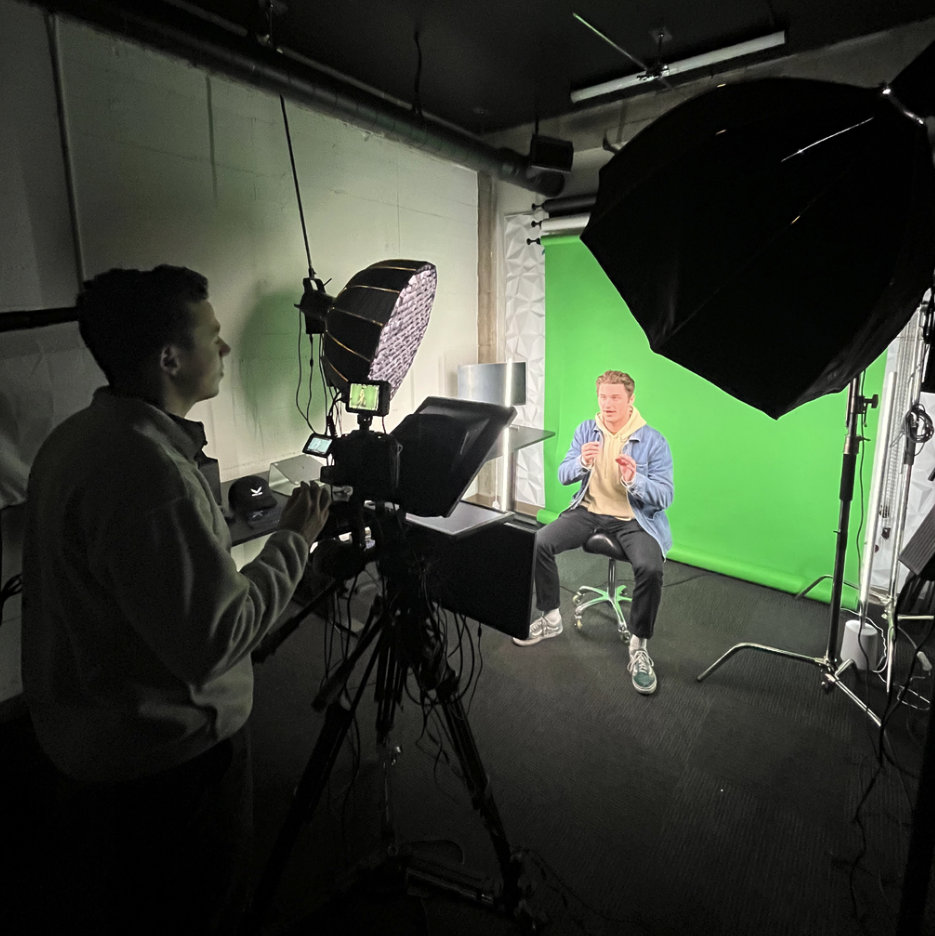
Editing
For this specific piece of ad creative, the first thing we did was key out the green screen in order to overlay the actor on our preferred background.
In this case, we featured screen recordings of the actual product platform behind our subject. Then it’s just syncing the video with our external audio, adding music, subtitles, headlines, and designing other key digital marketing principles like our call to action. After going through editing revisions with the client, our final ad creatives (up to 27 versions) are ready to hand off to the media buying team for launch!
It really is that easy, but if you need a little extra help, or if you want us to handle it for you, just email robby@strikepointmedia.com and we’ll schedule a call right away to help you get going immediately.
Split Testing Secrets
One of our responsibilities to clients here at Strikepoint Media is to maximize your return on investment. Our mission is to help you find new customers and help you turn them into raving fans – and to do so at the best possible price.
A big part of that is split testing. We are constantly split testing different elements of every piece of creative we produce (like the modular script approach above) for a good reason. Here’s an example of why that’s so important.
Here’s an extremely successful landing page we were running for Benzinga.
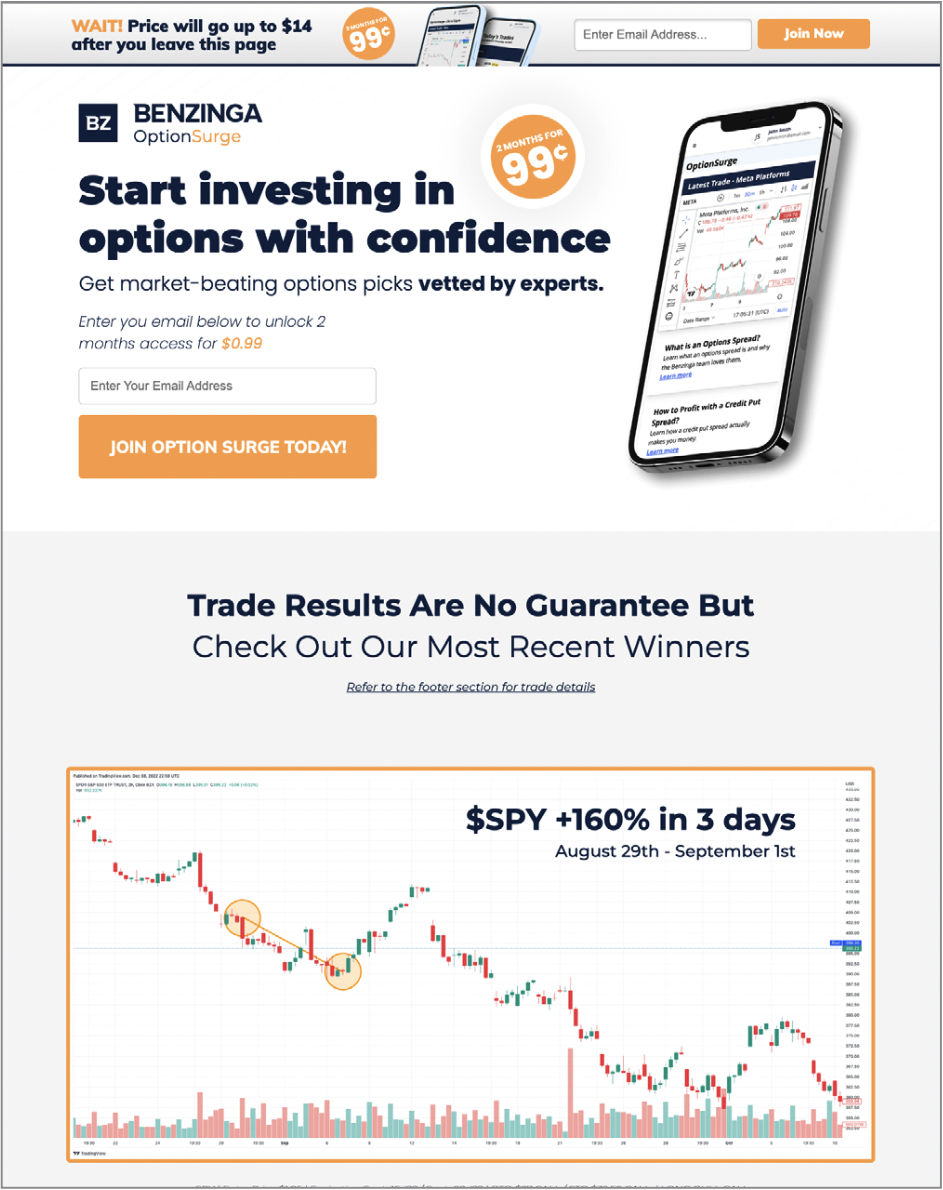
The clients were happy, we were happy, new cus- tomers were happy…
No need to keep tweaking if everything is good, right?
Except, that’s not how we work. Always be split testing! Because then you try new headlines and get this…
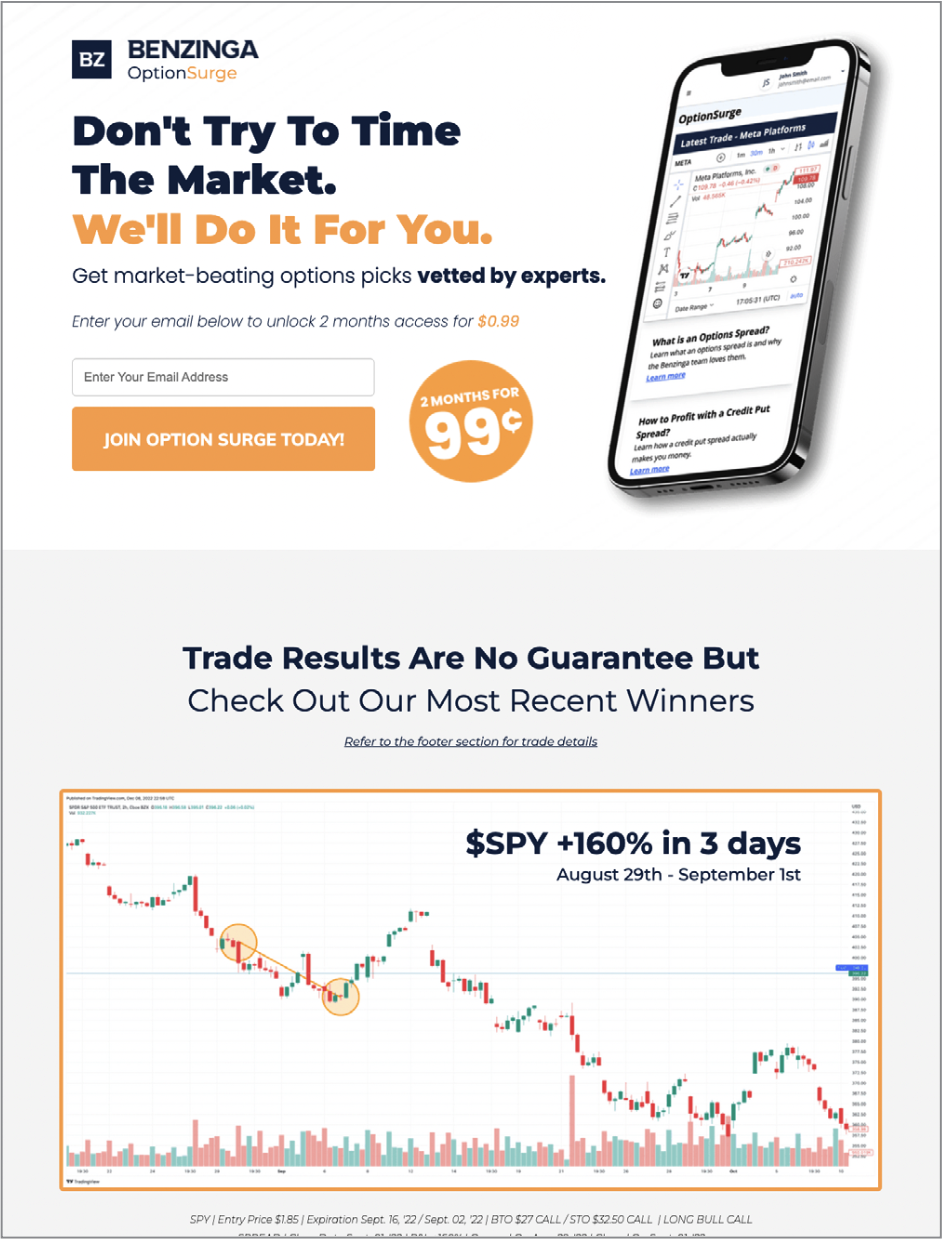
And find yourself with 55% improvement in CVR!
This new headline was a different hook, timing the markets vs investing with confidence, and seemed to connect better with a wider audience.
Now, keep in mind, some headlines work better on different platforms, so always remember your audience. But as you saw in our beat the algorithm section, focus on good, valuable content and the platform becomes somewhat secondary.
Another testing example is this winning ad creative.
After some tweaks to the headline and body copy, the CPA on this specific ad came down to 50% below target, while CPL was roughly 60% lower than target!
The only thing that changed was ad creative.
The headline and copy do a really good job at communicating that people who trade options by themselves spend a lot more time with very
little return. That comparison chart is also really effective at showcasing what you get for $1.
The actual copy on the ad reads…
“Tired of market uncertainty and the effects on your trading account? Our Options Alerts system is allowing us to help our members spot market corrections BEFORE they happen and PROFIT in bear markets! Click here to see how.”
Here’s the original ad:
The difference between the two is clear. One ad focuses on the benefits and features of the product, while the other focuses on WHO is selling the product.
Keep testing your own creatives to find what works best for your audience and you’ll keep improving your lead gen results.
Copy Corner
Head-Turning Hooks: How to Force Leads to Read Your Ad
Pop quiz: What’s the difference between your USP and your hook? Most people think they’re the same. And though they’re similar, they most definitely are NOT the same.
Your unique selling proposition (USP) is the reason someone should click through to your ad instead of scrolling past you or clicking on a competitor’s ad.
The hook, on the other hand, is…
- The fascinating fact that makes readers stop in their tracks to find out more.
- The scintillating story that they’ve got to read, or it will ruin their entire day.
- The curiosity provoking idea that grabs hold of their imagination and won’t let go.
Generally speaking, your hook is more heavily focused on in long form promos. It’s often the headline and found as the main idea within your copy.
At the very least, within your lead. If it’s not there, then the promo is poorly written and won’t perform. Now, here’s the thing about a hook …
It has to be authentic!
As a general rule, there is only ONE hook for any promotion. Once you find THE HOOK, you don’t need to dig for secondary ones. They won’t pull as well.
And never try to make up a hook out of nothing. If you can’t find a true hook, you’re doing it wrong.
Take a look at some great HOOK examples… Hook: The Amazing Secret Of A One-Legged Golfer

Hook: The Best Place On Earth To Live

Hook: Government Seizes Control Of US Bank Accounts

These hooks and headlines are so powerful that it almost forces your audience to read on to figure out what the story is about. The hook drives readers to the USP but doesn’t rely on the USP to sell the hook.
When you use one to fuel the other, magic happens.
Moral of the story: keep the two separate, and find a real hook you don’t need to make up. Truth is stranger than fiction, so if you’re not finding a strong hook, you’re not searching hard enough.
What’s Hot At Strikepoint
For SPM, 2023 has been all about providing value. That’s not changing anytime soon as this month’s issue of the C2C Report clearly shows.
But truth be told, we’re actually stepping it up this year on all fronts, beginning with our in-house team! In the first few months of 2023 alone, we’ve brought on a new Media Coordinator, new Media Buyer, and a new Social Media Manager! We’re so excited to have Eva, Louis, and Allegra join our team!
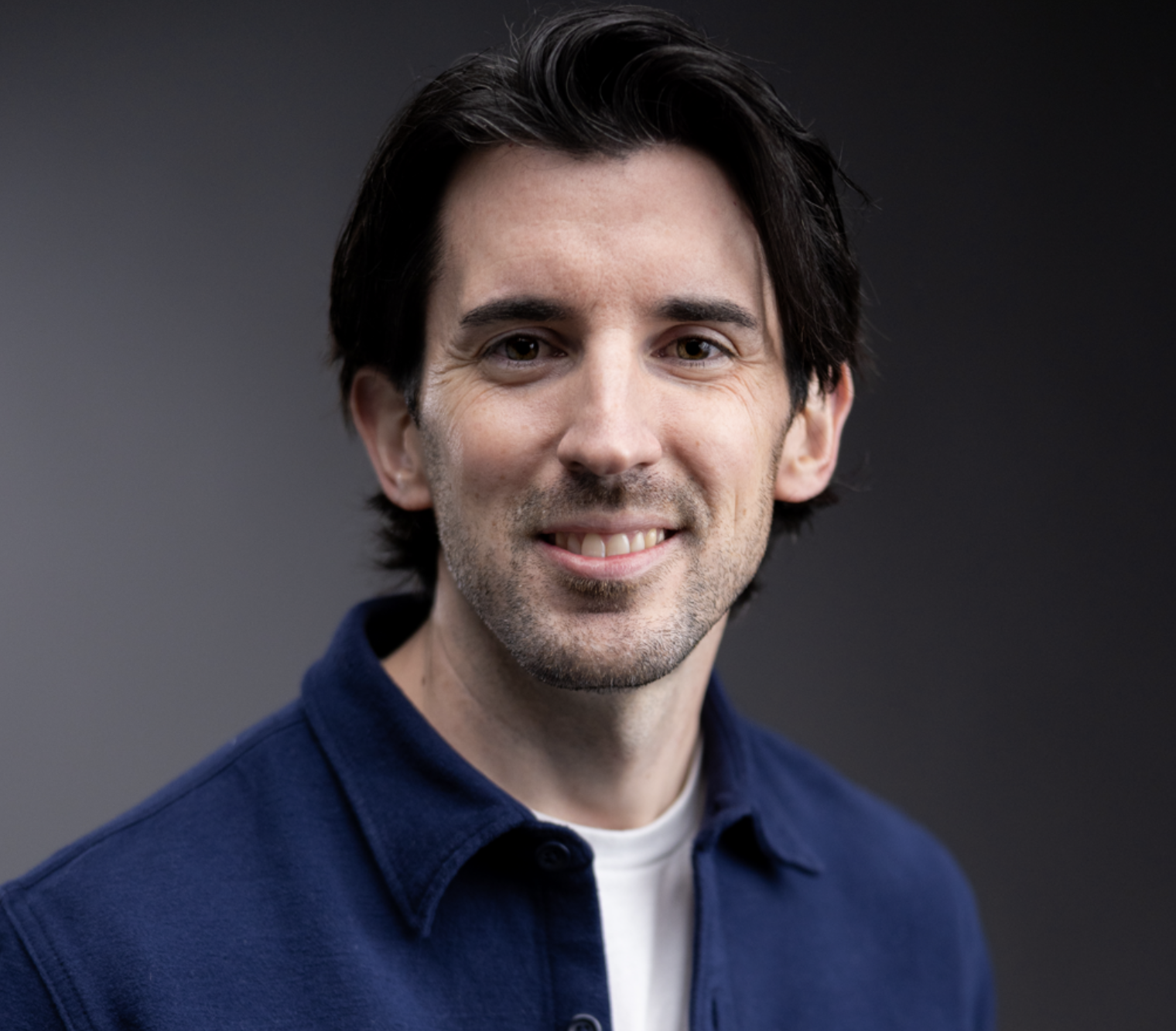
Additionally, we just brought on an incredible new Creative Director, Robby Bucarey!
He’s a huge get for SPM, so I’d like to formally introduce our readers to him! To sum him up in just a few short words, he’s a Creative Director with a knack for marketing who loves helping businesses get more eyes on their brand! He spent the last few years leading digital marketing creative teams and building brands for Dave Ramsey out of Nashville, TN and previously led design for international distributors, manufacturers, and direct to consumer products.
And now that he’s at Strikepoint Media, we’re all looking forward to seeing him build upon that expansive portfolio and take our clients’ offers to the next level.
Speaking of leveling up, we have THREE new episodes of Conversion Experts to share with you!
Plus, we’ve got a bunch of new blog content as well!



And because we’re so focused on providing more value than ever to our clients, we could use a few more hands on deck! That’s why we’re looking to hire for our upcoming Spring and Summer Internships! Specifically, we’re looking for the following interns:
- Ad Creative Strategy
- Business Developmen
- Digital Marketing
If you or someone you know might be a good fit for any of these open internships, come on down and let’s talk!
That’s it for this month’s issue of the C2C Report! As always, if you have a question, or if there’s anything you’d like to see more of or have us focus on (or that we can do better), please shoot me an email and let me know directly!

Jeremy Blossom
CEO, Strikepoint Media
P.S. Subscribe to our YouTube channel if you want more regular content and guidance for free.



